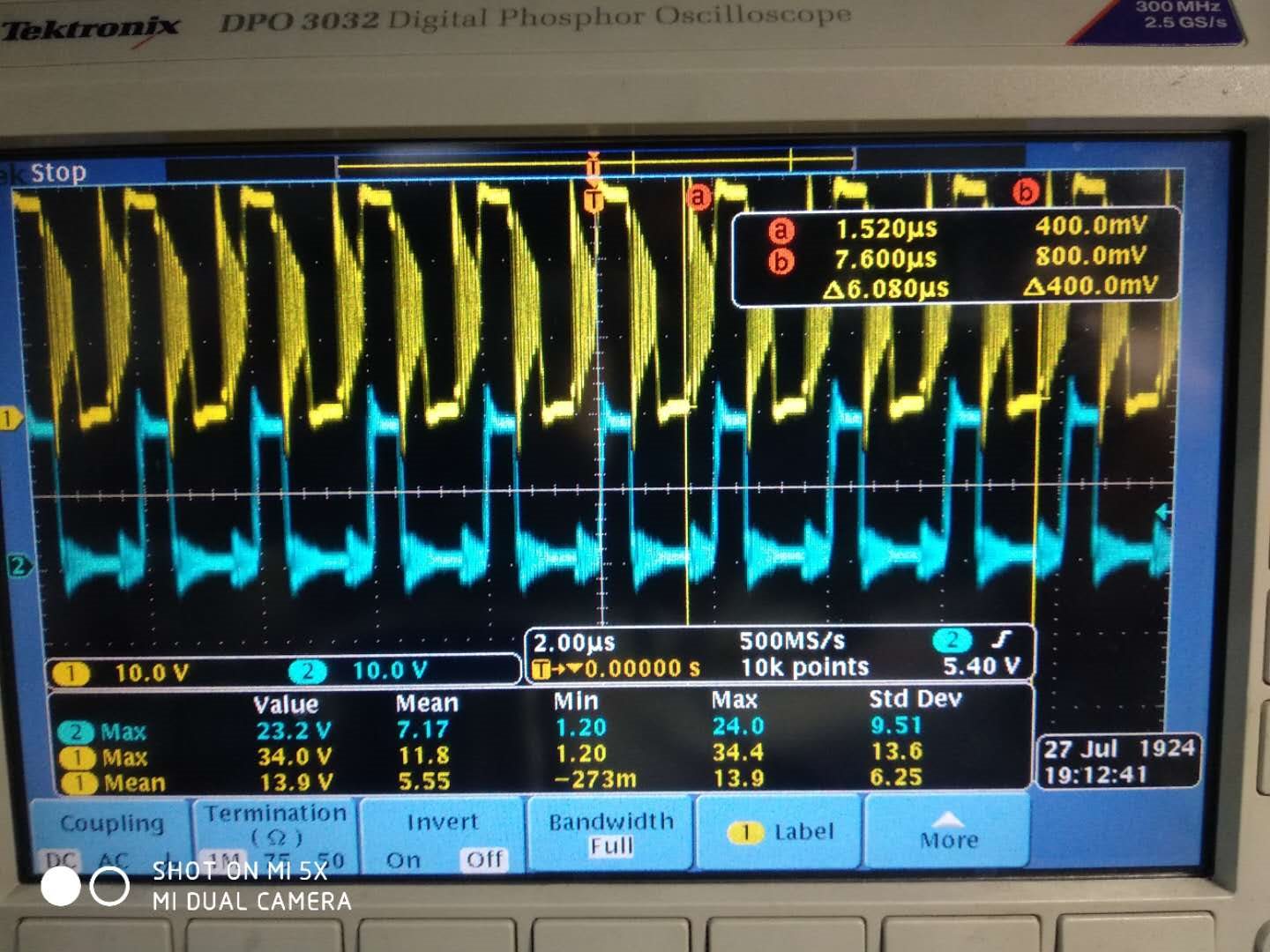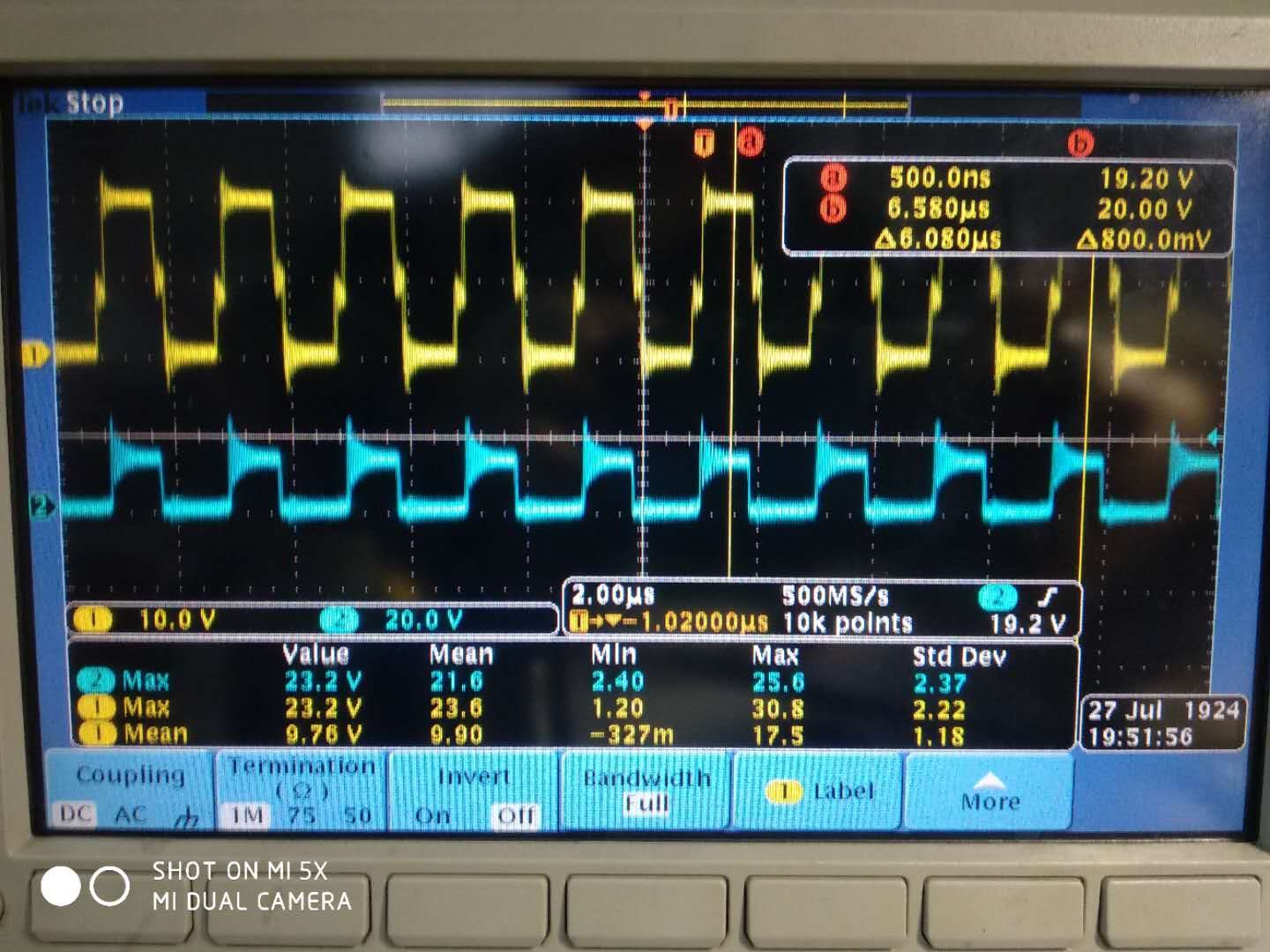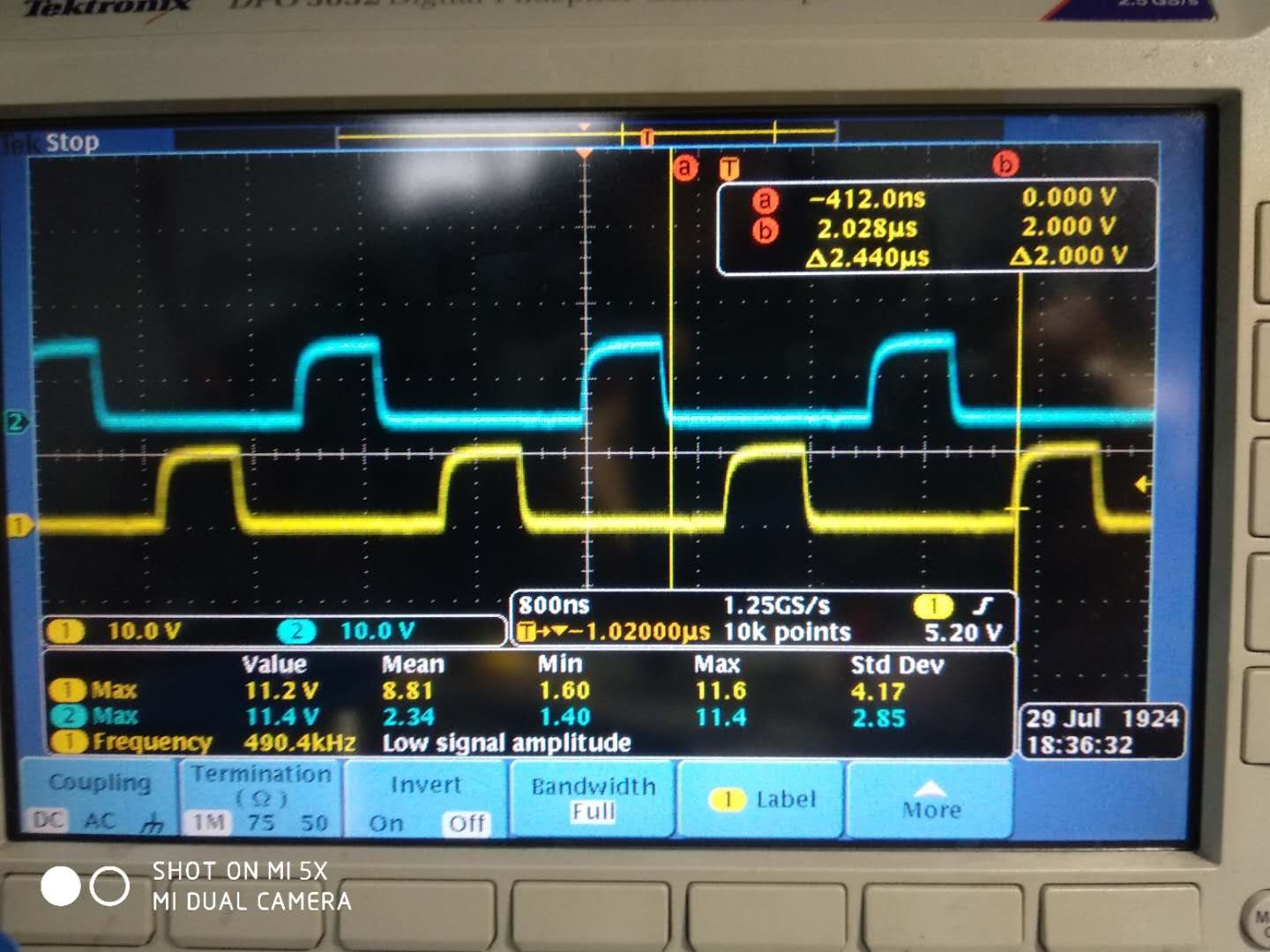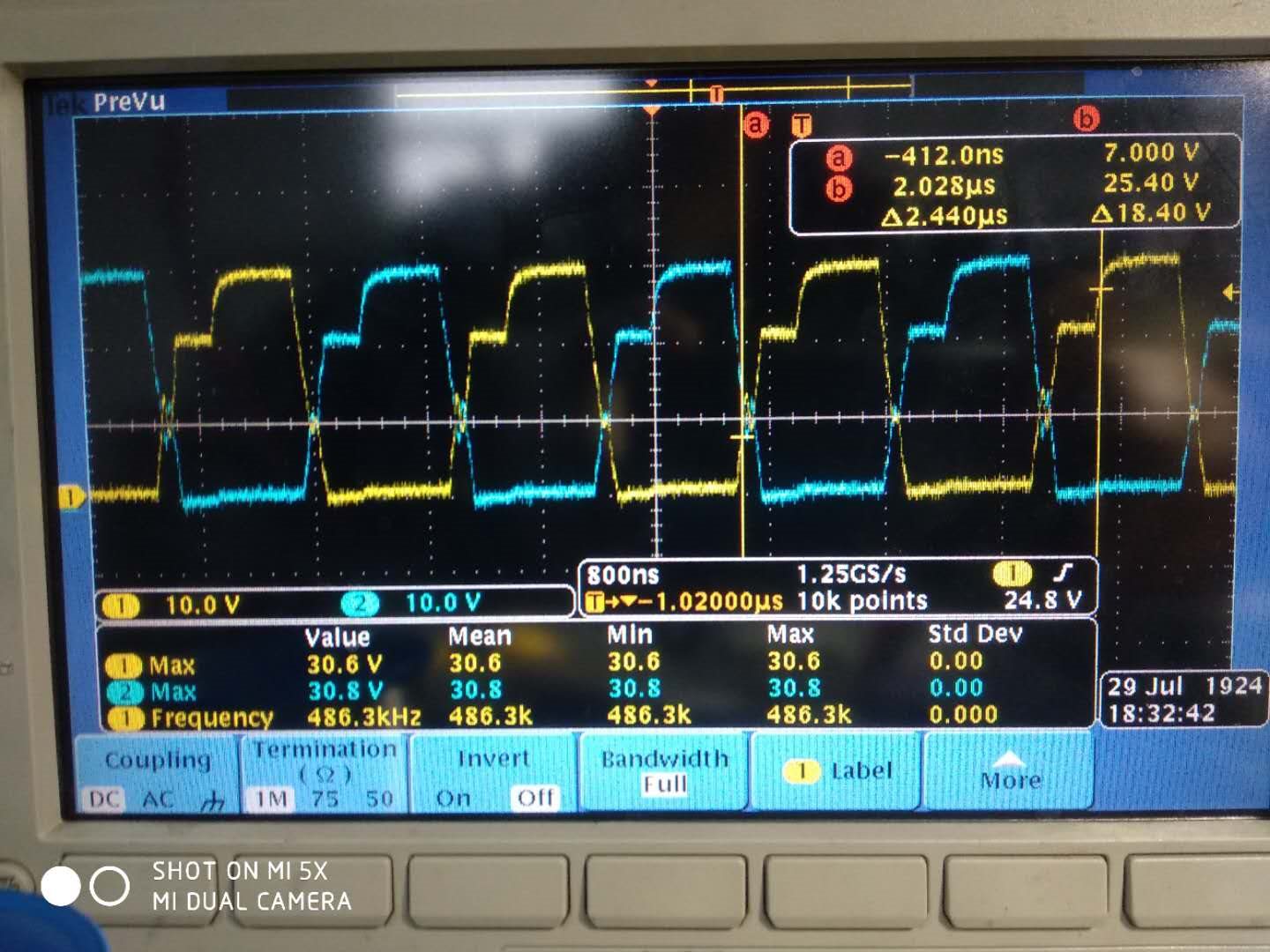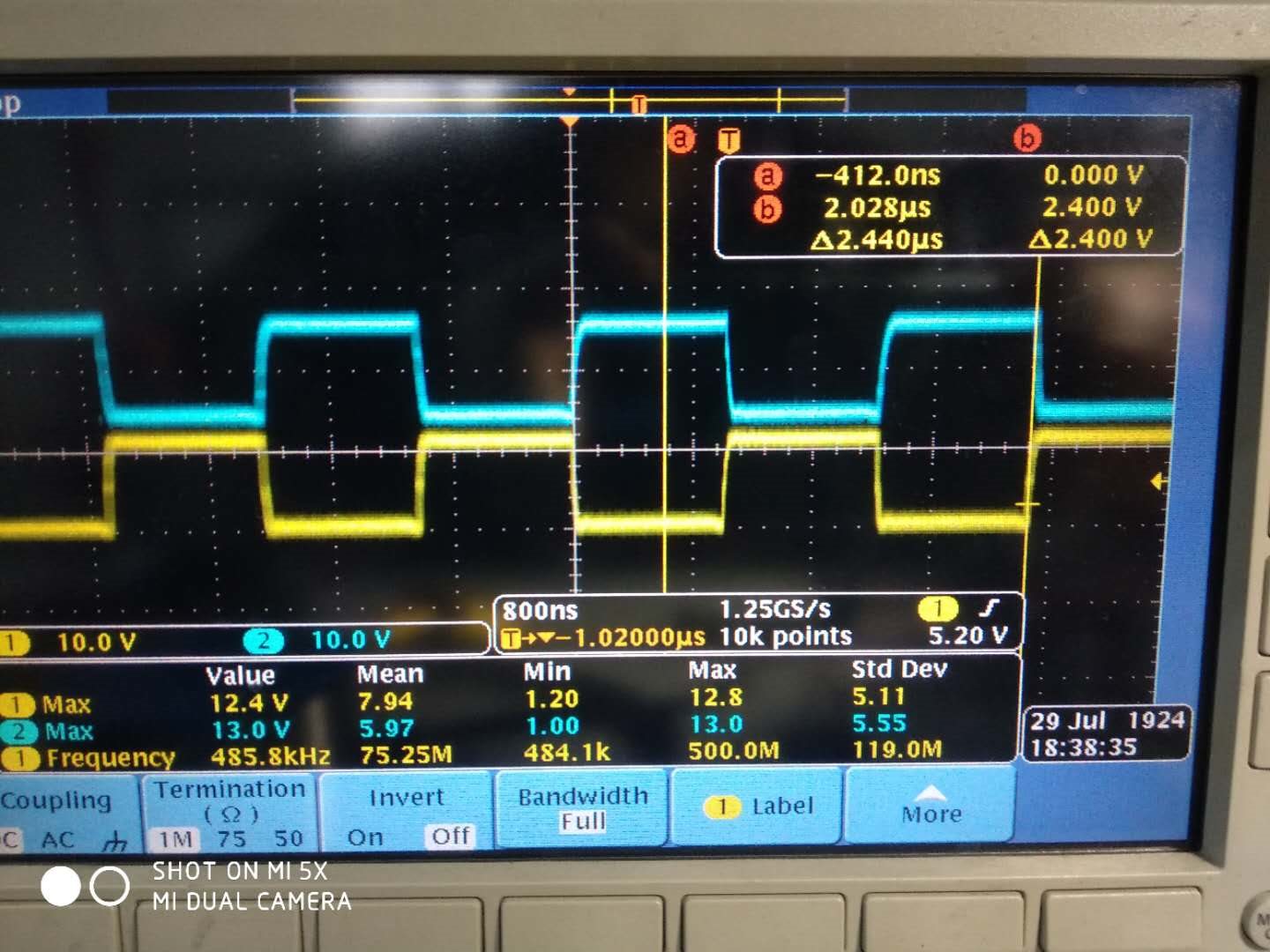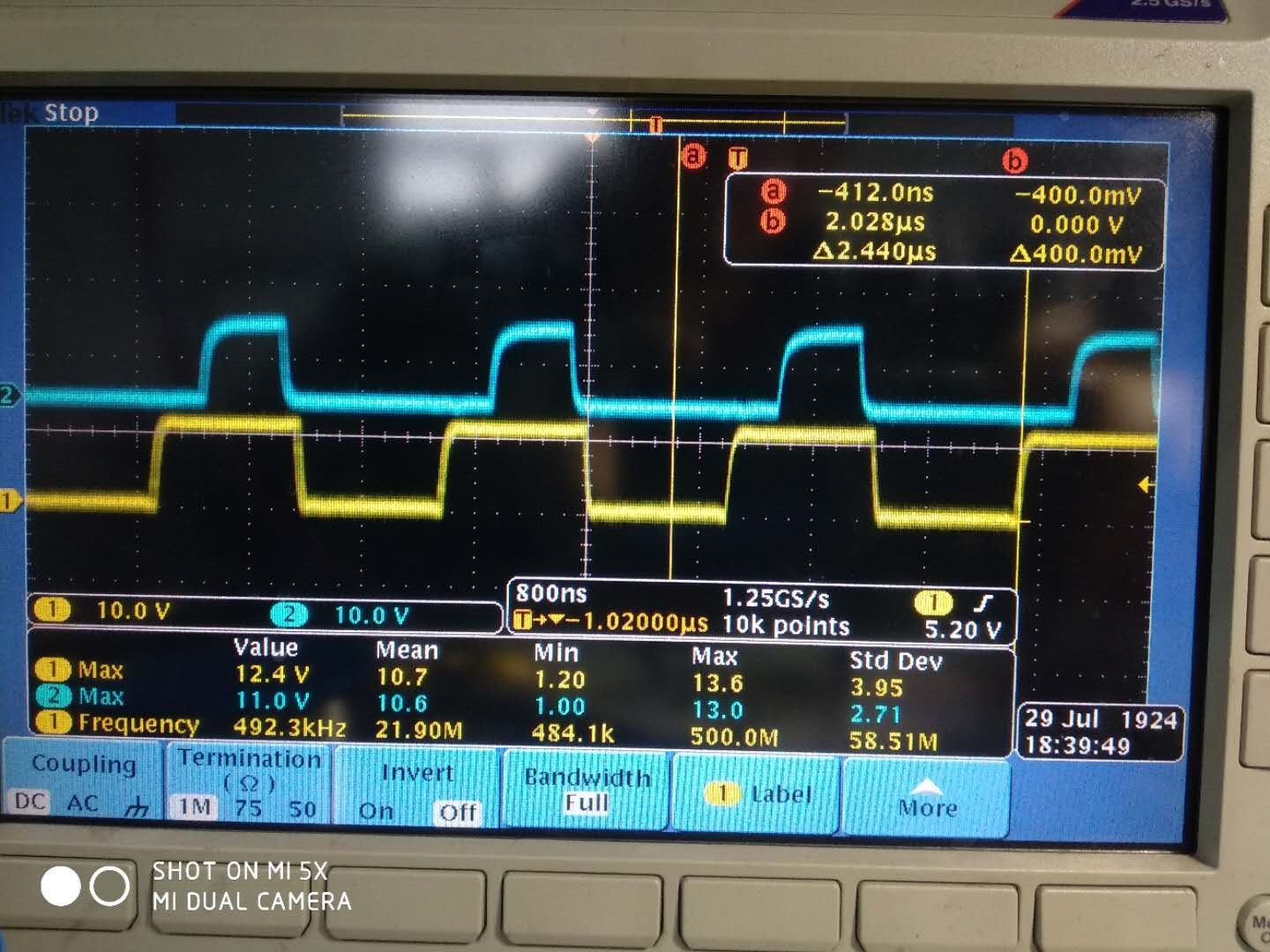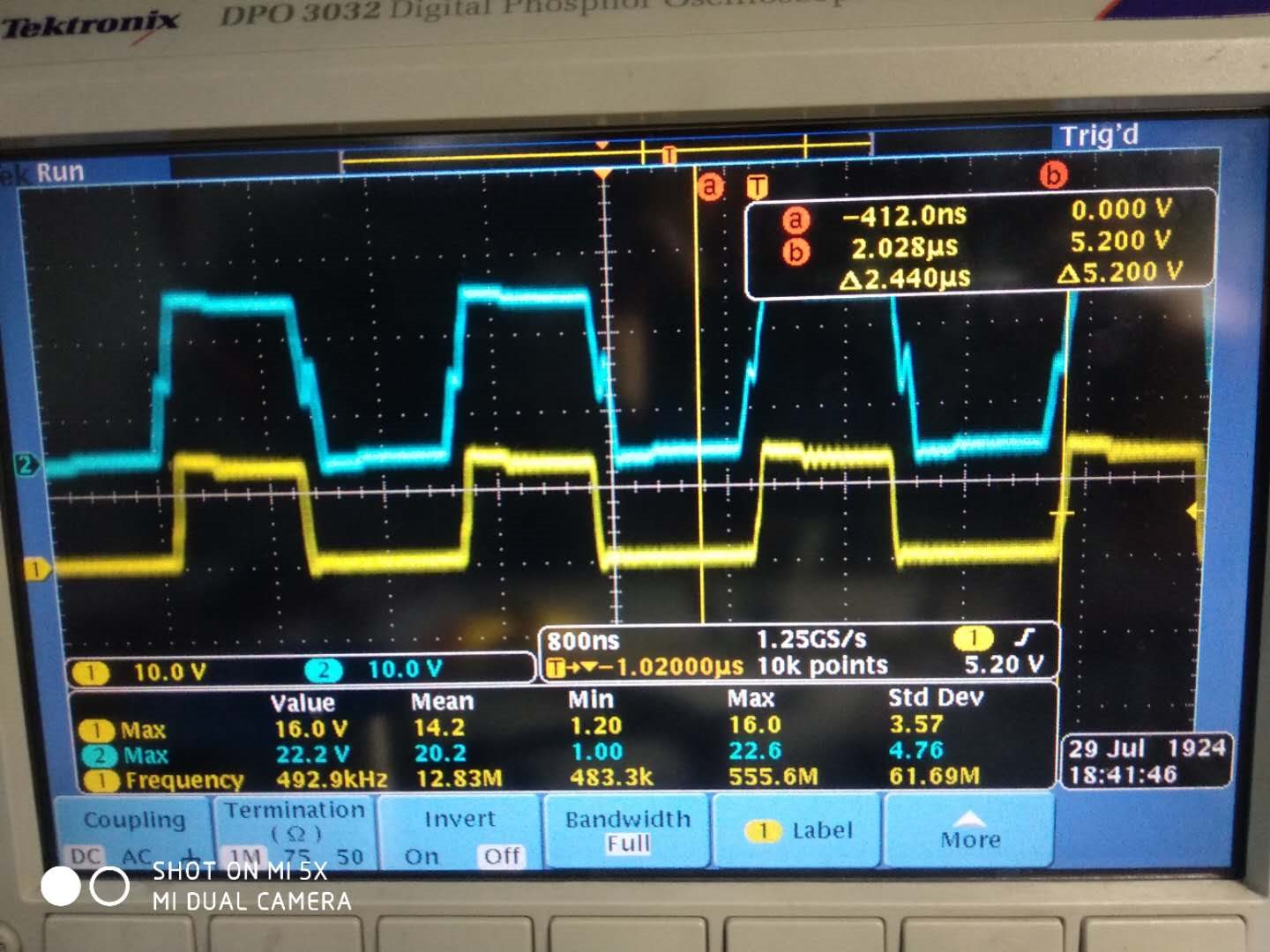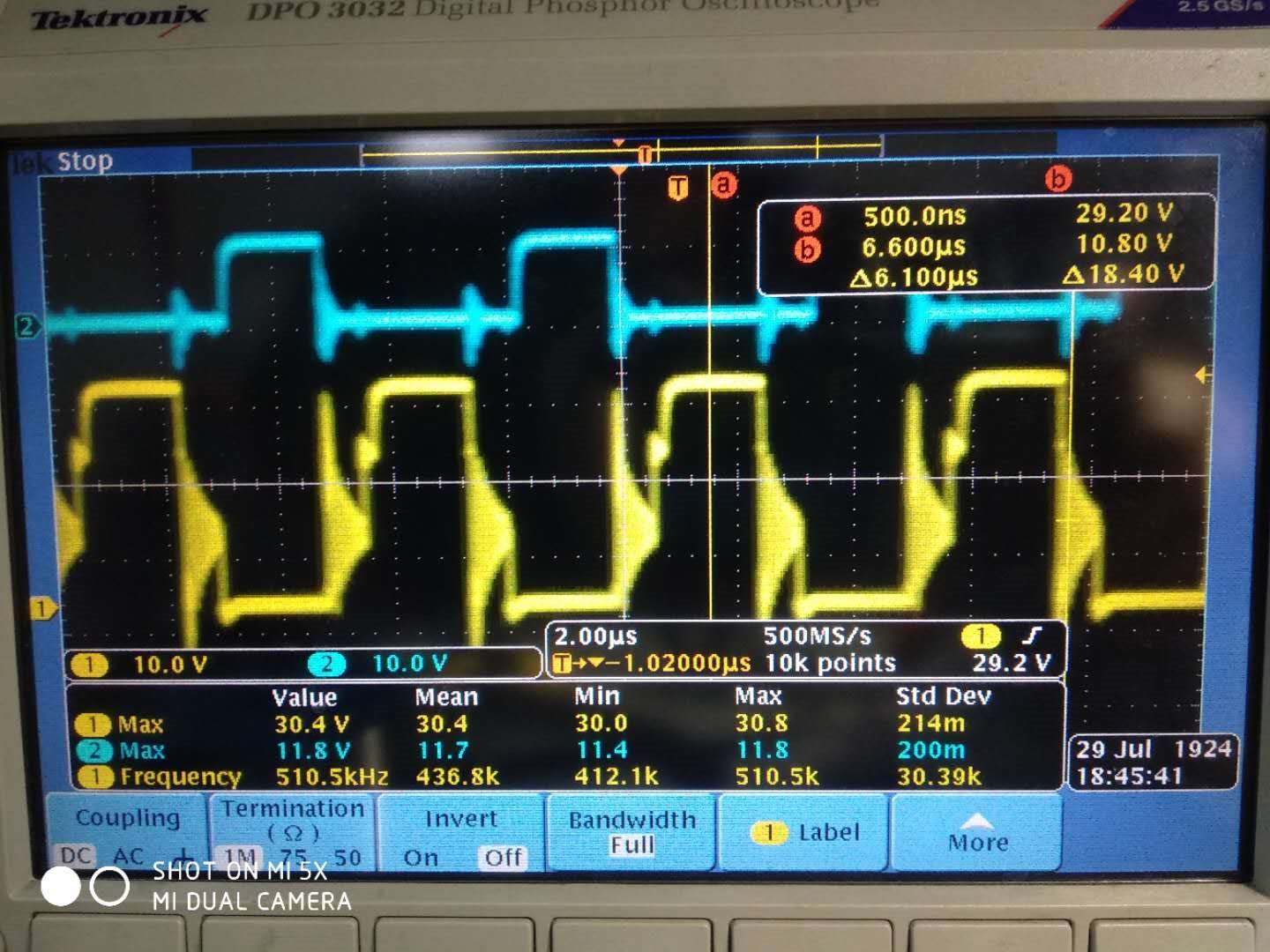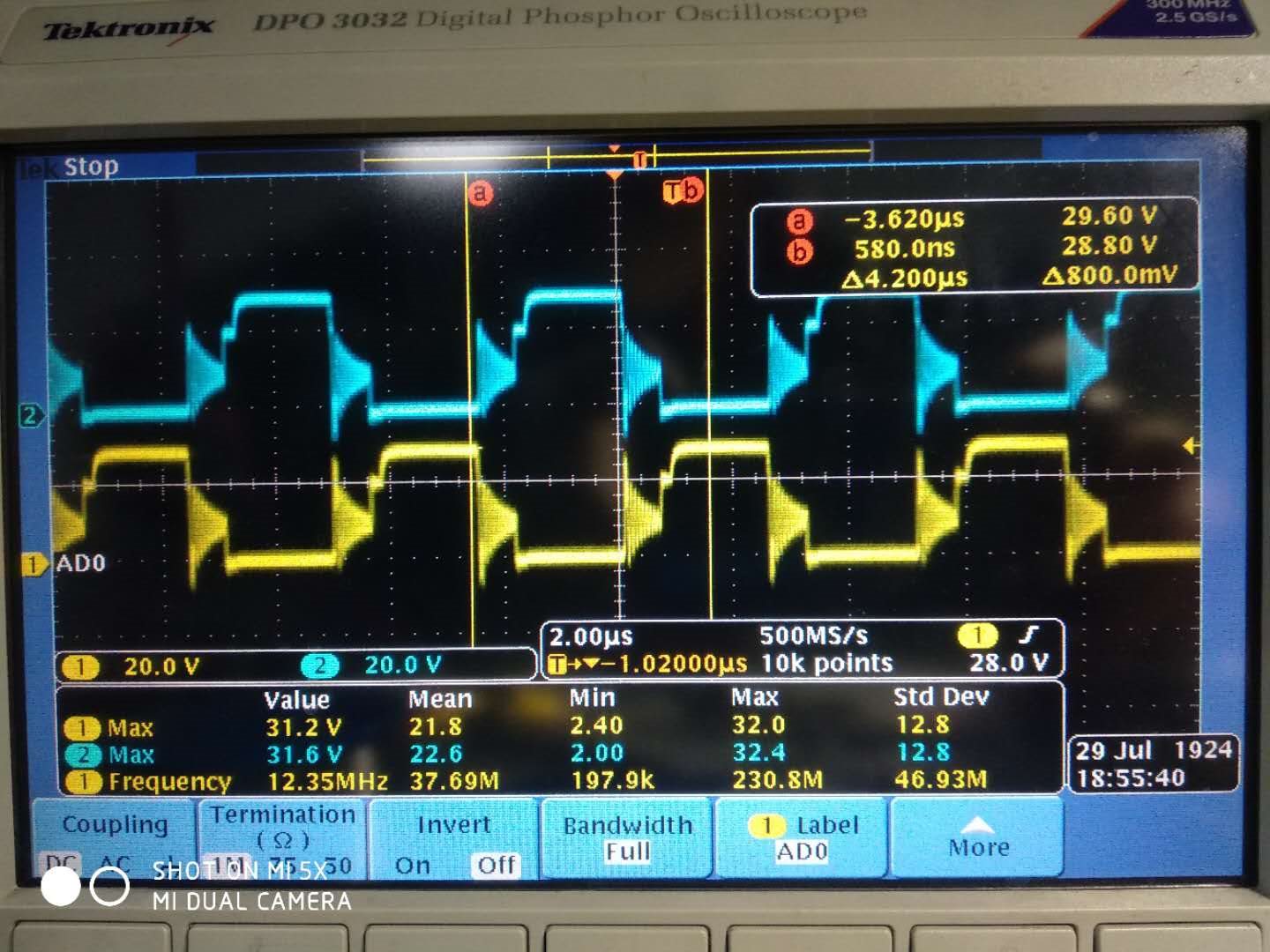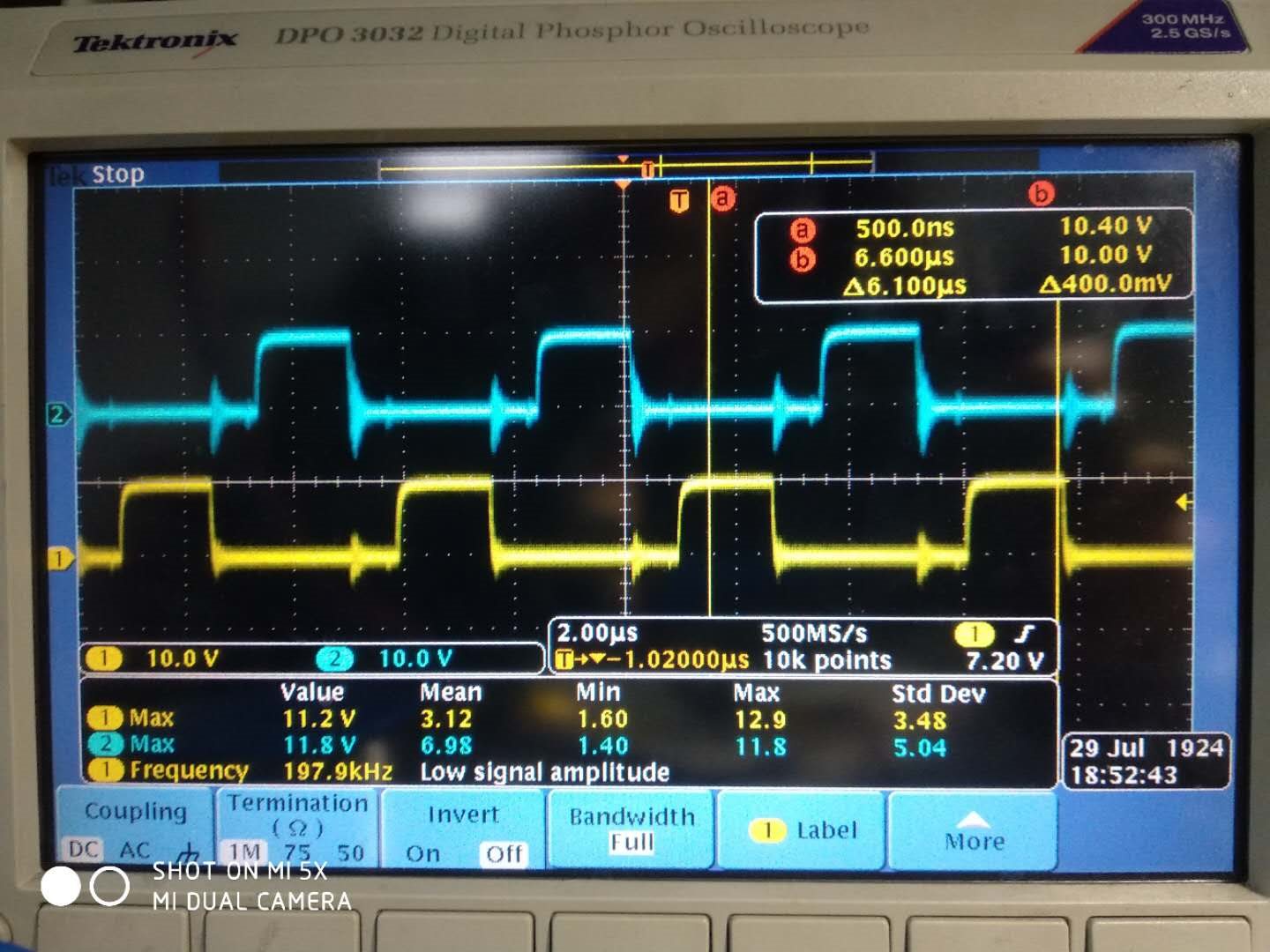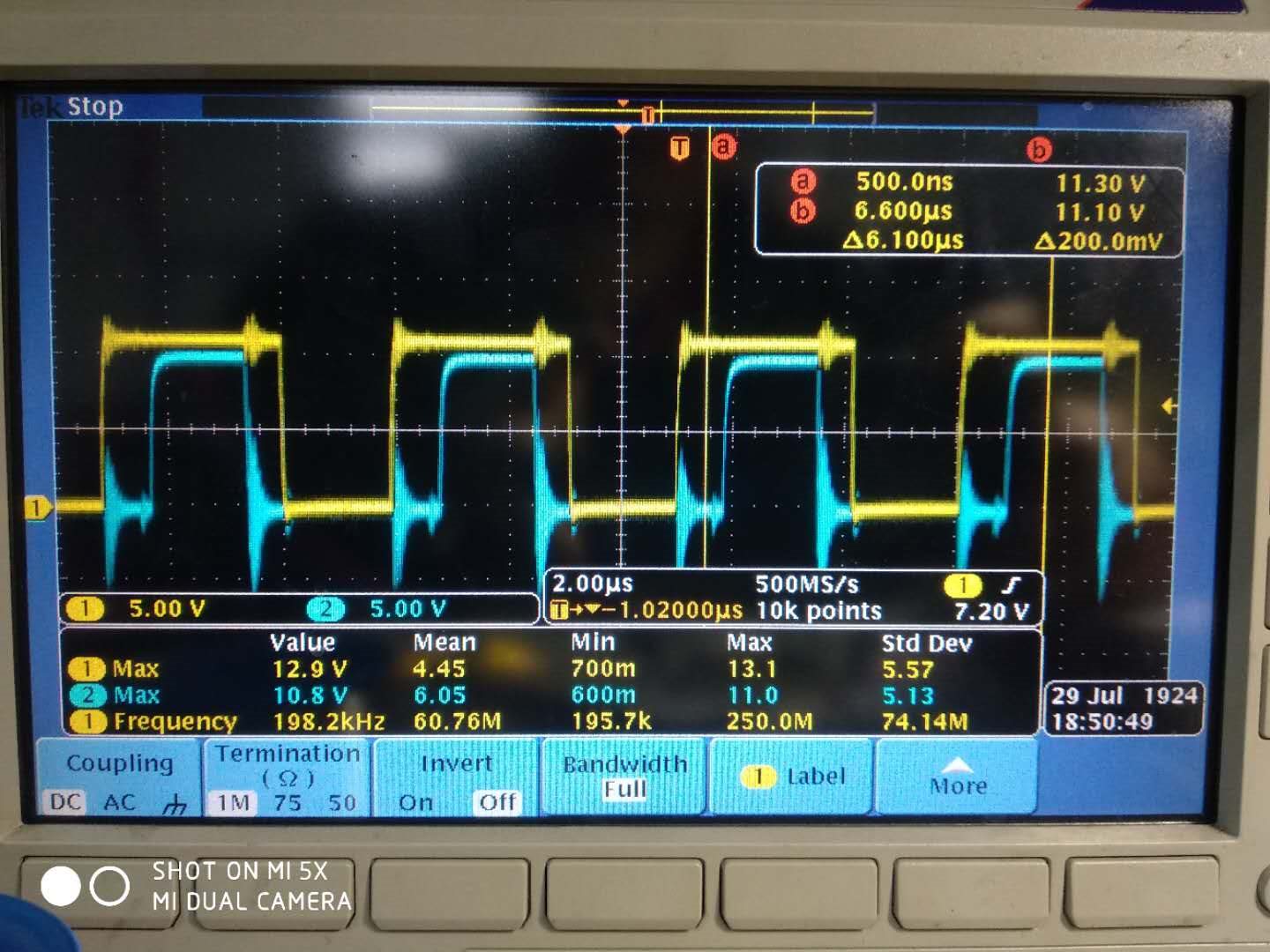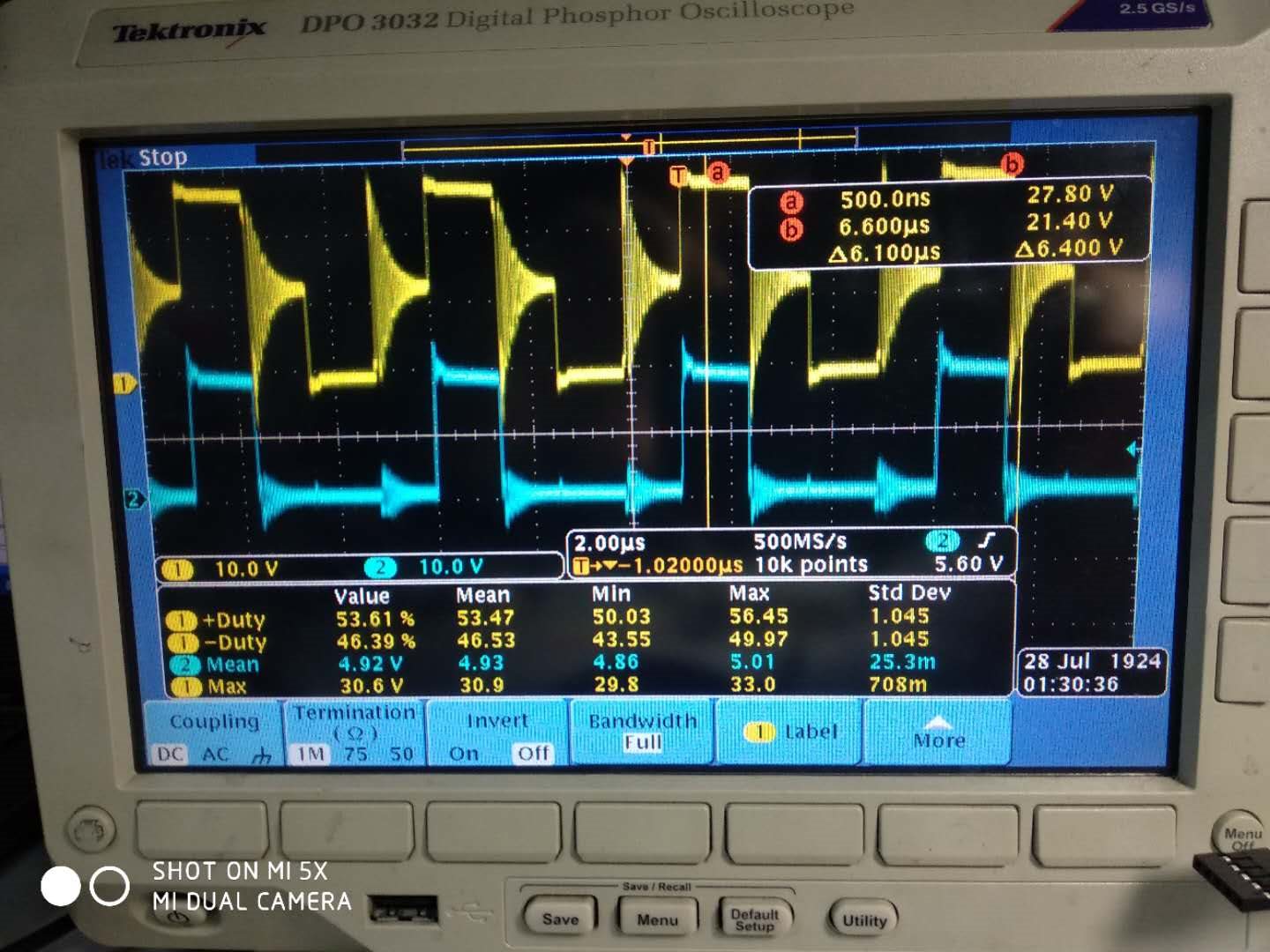Other Parts Discussed in Thread: UCD3138
Hello
I made a hard-switched full-bridge power supply based on the UCD3138 development board.
When the power is turned on, the secondary synchronous rectification is added, the waveform is abnormal, and the input current continues to rise, and the waveform is as follows:
The yellow waveform in the above figure is the transformer primary winding voltage, that is, the intermediate junction voltage of the half bridge arm. When the primary MOS tube is turned off, it is dead time and the oscillation is abnormal.
The blue color above is the secondary winding voltage of the transformer, that is, the voltage between the DSs of the synchronous rectifier.
When the secondary synchronous rectification is turned off, and the 4A load is added, the waveform is normal, the input current is stable, and the waveform is as follows:
I am very confused, why is the circuit abnormal after adding synchronous rectification?


